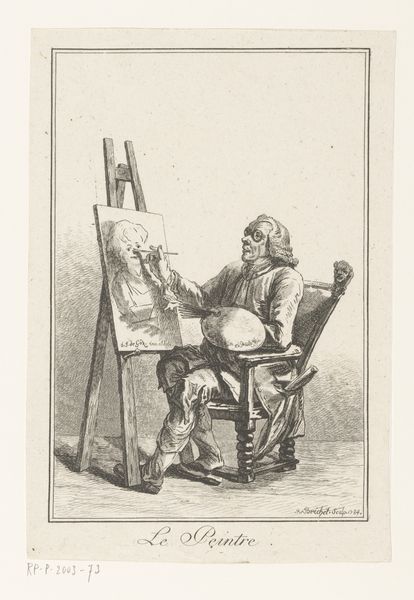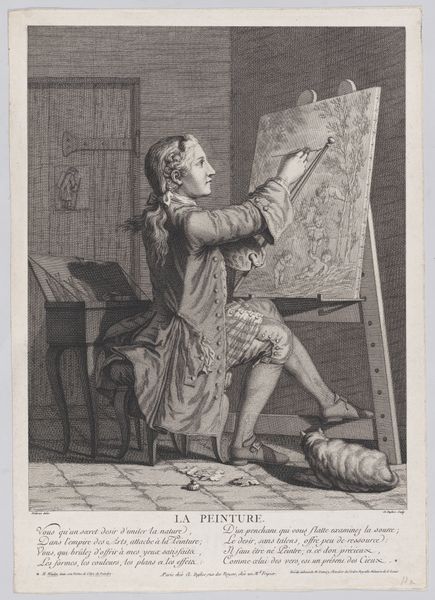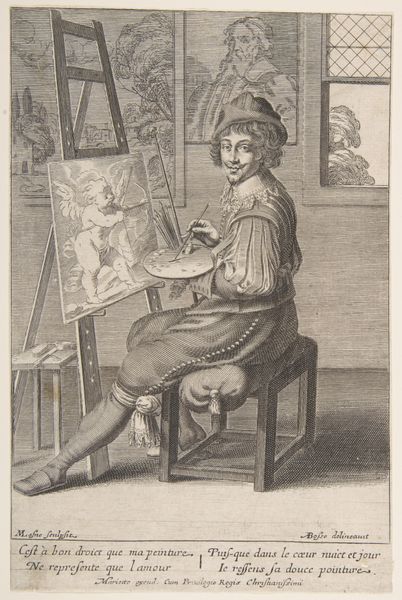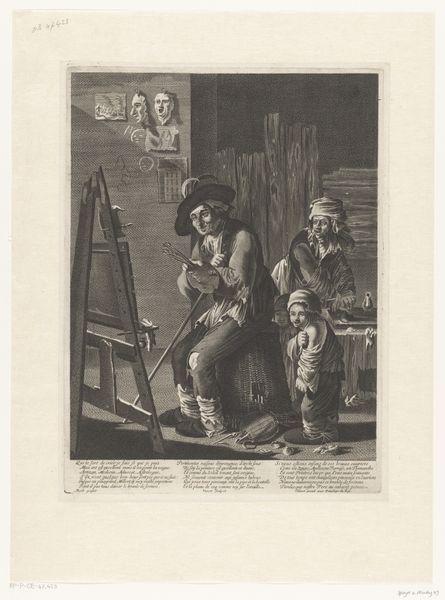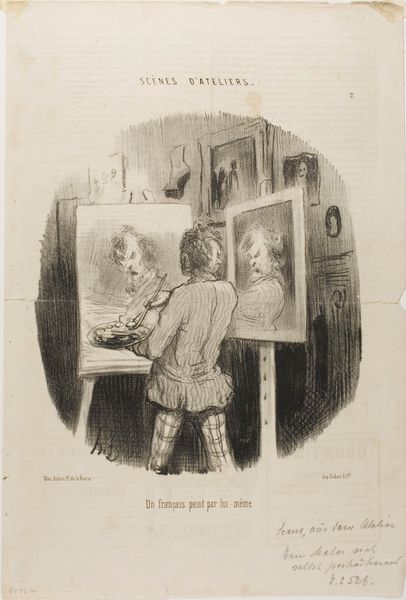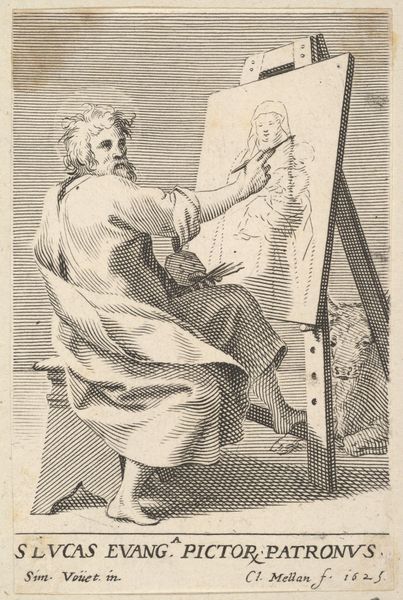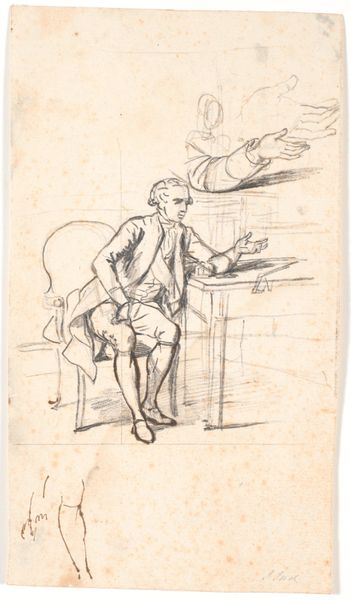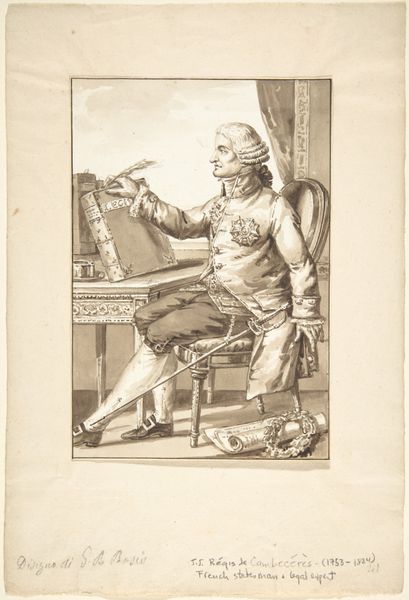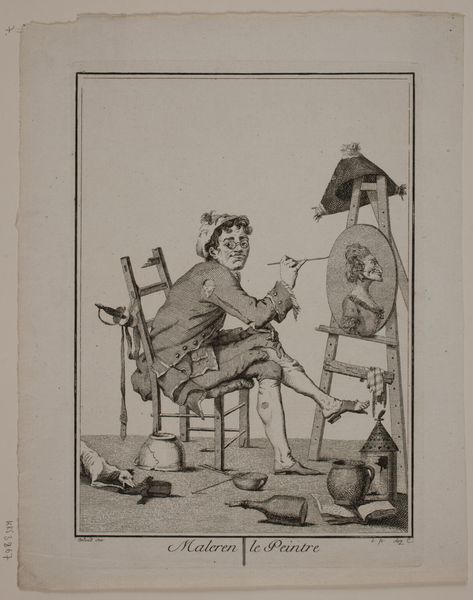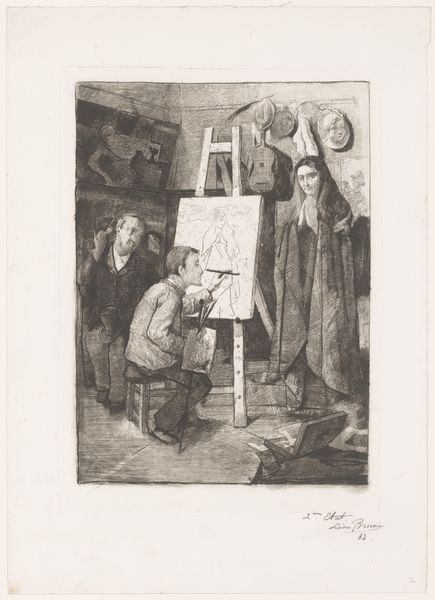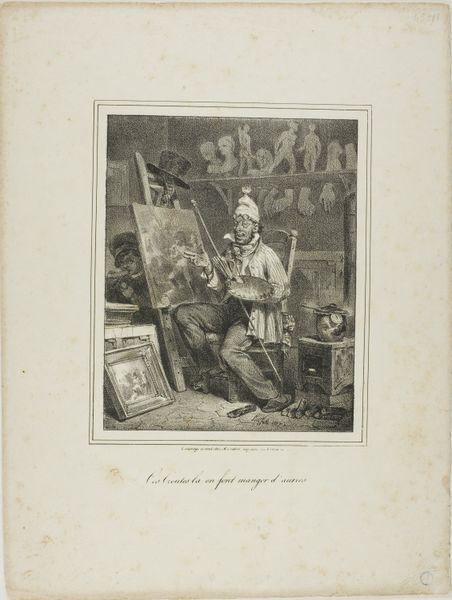
William Hogarth, Serjeant Painter to His Majesty 1764
0:00
0:00
Dimensions: Sheet: 15 15/16 x 15 3/4 in. (40.5 x 40 cm)
Copyright: Public Domain
Curator: Here we see William Hogarth in his 1764 engraving, "Serjeant Painter to His Majesty," housed here at the Met. It’s an intimate portrayal of the artist in his working environment. Editor: My first thought? It feels staged. The meticulous detail gives it a deliberate quality, almost performative. The textures in his clothing and the polished sheen of the furniture contrast starkly with the sketchiness of the canvas. Curator: Absolutely. Consider the materials: it’s an engraving, a process involving meticulous labor. Hogarth was fascinated with printmaking, recognizing its ability to disseminate his art to a wider audience beyond the elite. It’s a conscious choice to reproduce himself in this way. Editor: Right, it democratizes the artistic process, but also invites a critical examination of his self-representation. Note the canvas on the easel depicting a sketch of a theatrical muse– an allusion to Comedy. This suggests he's presenting himself as more than just a craftsman, aligning with intellectual pursuits and classical ideals. However, the context of its creation is pivotal– Hogarth's difficult tenure as Serjeant Painter was marked by court squabbles over payment and the perception of his work by a higher class he never quite fit in. Curator: Indeed, there's tension there. Hogarth actively engaged with the art market and debated aesthetic value, even taking jabs at old masters. By presenting himself as both creator and subject, he’s challenging notions of artistic authority and skill by explicitly calling our attention to labor and materials. Editor: And let’s acknowledge the obvious: this image normalizes the presence of white, male artists. But whose stories are missing here? Who doesn’t get to create and disseminate their work in this era? This portrait subtly reinforces hierarchies. Curator: Certainly. Yet, looking closer at the discarded sketches near his feet adds another layer of analysis to the economics and labor. This invites scrutiny regarding how much Hogarth chooses to present and withhold, and suggests an intense awareness on his part concerning posterity and perception. Editor: This really gets you thinking about artmaking in a broader historical context and I feel inspired to consider ways to amplify other narratives and artistic traditions. Curator: A good point! After closely looking at this piece, it seems to remind us about how artworks themselves embody both explicit intention and embedded value, for creators and observers.
Comments
No comments
Be the first to comment and join the conversation on the ultimate creative platform.

